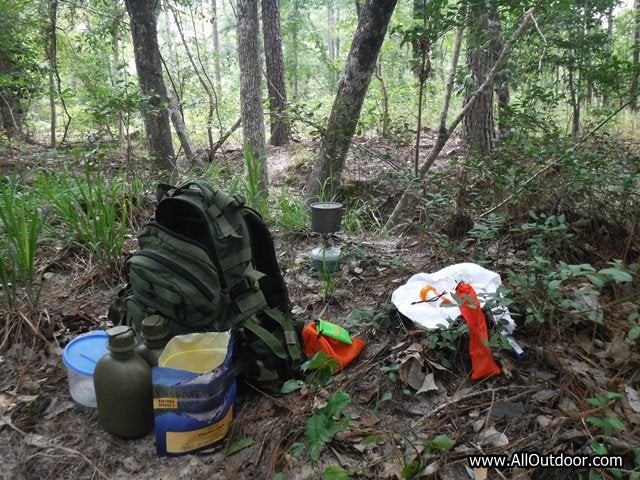Three Tips For Setting Up a Backpack
Kevin Felts 01.10.18

Are you interested in hiking, but not sure where to start? Maybe start out by cramming all kinds of gear into a backpack, and heading out on the trail? Then when you stop for a rest break, you have to dig through the pack looking for the canteen?
Rather than learning lessons the hard way, let’s take a few minutes and talk about setting up a backpack. This is going to be a simple setup with just the basics.
Gear List:
- Rain Poncho
- Mosquito repellent.
- Water bottles or canteens
- TOPO maps, compass and GPS.
- Water filter.
- Snacks
- Cook stove and cook set.
Heavy Items
The heavy items, such as canteens and water bottles, go on the sides of the pack, as close to your body as they can be, and equally balanced on both sides.
A person’s center of gravity is “around” his or her belly button. Heavy items should be close to the center of gravity, or slightly below. This helps prevent the hiker from being top-heavy.
The closer heavy items are to the hiker, the less the person has to lean forward to counter the weight. As weight moves away from the hiker, the more they have to lean forward.
Having the weight balanced on both sides helps prevent fatigue. The body does not have to exert energy to strand upright.

Most-Used Items
These are the gear you are likely to use at every rest break:
- Water filter.
- TOPO maps.
- Snacks.
- Compass.
- Mosquito repellent
- GPS… etc.
All of those would go in an outside pouch so the hiker does not have to dig through all of the least-used gear to find a water filter.
For example, I stop around every 45 to 60 minutes. Every rest break or every two rest breaks, the GPS, compass, and TOPO maps come out. Using the TOPO maps I have an idea where water sources will be. Since those items are used quite often on a hiking trip, they should be within easy access.
Least-Used Items
Gear that is used only once or twice on a hiking trip, and is in the main compartment of the pack.
- Stove and fuel.
- Cook pot.
- Lunch.
- Eating utensils.
- Rain poncho.
On a day-long hiking trip, when I reach around the halfway mark (or when I get very hungry), I will stop for lunch.
My rain poncho is laid on the ground, stove set up, water put on to boil, and canteens refilled at a stream.
Final Thoughts
It makes things easier if you do not have to dig past the camp stove, fuel, or MRE to reach the water filter and TOPO maps.
Someone is going to say, “Kevin, what about a first aid kit?” That is usually in with the least-used gear, or in its own pouch strapped outside of the pack.